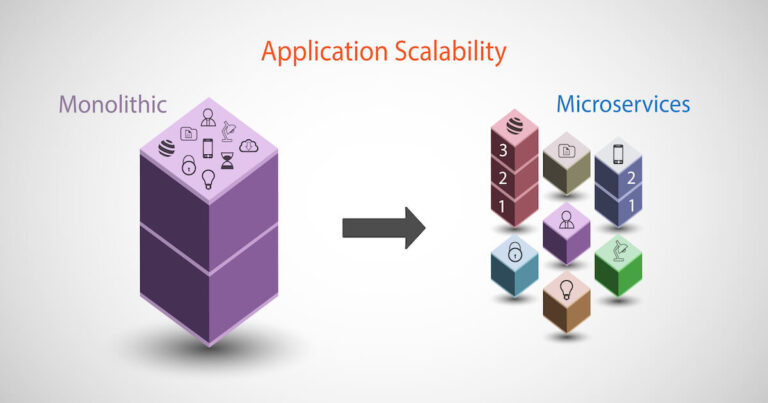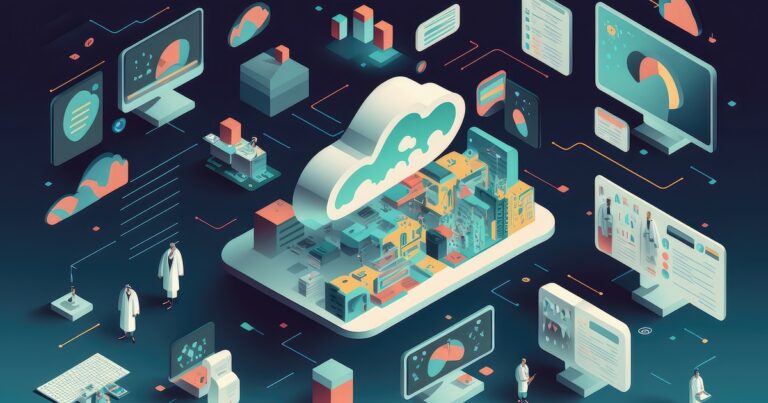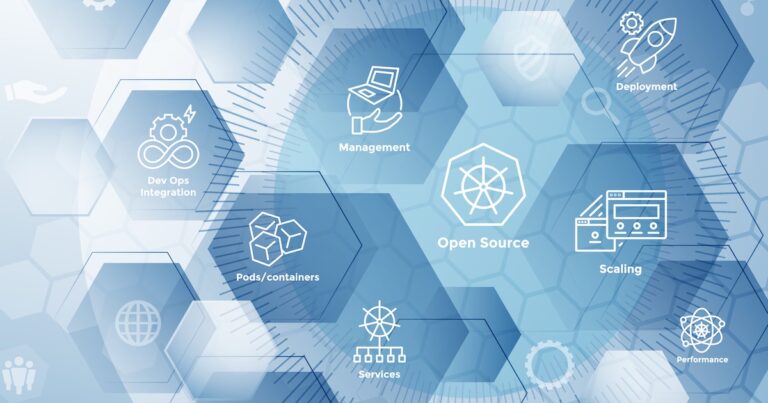Cloud-native is a concept of developing and running applications to take advantage of the distributed computing offered by several cloud delivery models. Cloud-native applications are designed and built to exploit the scale, elasticity, resiliency, and flexibility the cloud provides.
Applications built on cloud-native platforms bring together business and IT closer and optimize processes to create new opportunities and value for organizations by connecting people, data, and processes. In today’s time, every organization, whether large or small, is looking at moving to the cloud. Some have followed the path of companies such as Google, Facebook, and Amazon – the early adopters of cloud technology to achieve accessibility, availability and reliability.
While the foundation of today’s startups is cloud technologies, cloud adoption is also happening in large enterprises in traditional sectors across the world, such as manufacturing, mining, banking and telecommunications.
Cloud Adoption Vs. Cloud-Native Applications
There is a difference between being a cloud organization and a cloud-native organization. If you have a few VMs and databases in the cloud apart from your already existing infrastructure, you might have embarked your cloud adoption journey. however, truly cloud-based organizations have started to differentiate themselves as being ‘cloud-native’.
Cloud-native applications are the answer to the modern landscape of complex applications. With users expecting continuous innovation coupled with unparalleled responsiveness, cloud-native technologies enable business systems to be more strategic and increasingly flexible. Native cloud apps are hosted, built, tested, deployed and managed in the cloud, meaning they run from end to end in the cloud.
Elements of Cloud-Native Applications
Cloud-native applications are the amalgamation of several services, best practices and cultural change. One should adopt the following key elements helping build next-generation cloud-native applications, such as:
1. Microservices
Microservices provide the ideal architecture for cloud-native apps. Considered the right application modernization approach, microservices break down each application component into a series of independent services or modules—each service backing its own data and maintaining a specific business goal. Being independent in nature, it fosters faster application development helping businesses innovate faster.
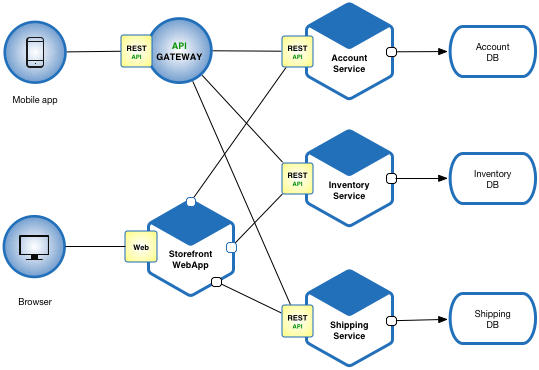
Image source microservices.io
2. Containerization
Containers are small software components that combine an application, its dependencies, and its configuration into a single image that may be operated in isolated user environments on a traditional on-server or in a virtualized environment. Since each service resides in a separate container with the required environment to run, it enables microservices to run independently of physical resources. Containers prevent microservices from interfering with each other.
3. Container Orchestration
Container orchestration is a concept of automating much of the operational effort required to run containerized workloads and services. It includes managing the complete container’s lifecycle, including provisioning, resource management, load balancing, deployment, scaling (up and down), networking, and more.
4. Serverless Computing
Serverless computing is a widely growing cloud-native application development model allowing developers to build and run applications without worrying about managing servers. When switched to serverless computing technologies, cloud service providers handle the routine task of provisioning and managing the server infrastructure. Developers can write their code in a polyglot manner and package them in containers for deployment. Once deployed, serverless-based cloud applications respond to demand and automatically scale up and down as needed based on triggers.
5. DevOps With CI/CD Pipeline
DevOps is at the core of cloud-native applications and is key to automation associated with building, operating and maintaining complex enterprise applications. DevOps accelerate business innovation by transforming every part of a business’s value chain using people, processes and tools. DevOps core feature CI/CD however promotes the use of the right set of tools and practices, enabling teams to leverage benefits of automation of the code builds, testing and deployment ensuring faster release cycles and value to customers.
6. Automation/IaC
Cloud-native applications are promised to provide speed and agility. But, that’s one side of the story. How do you achieve speed and agility? is the other side of the story which is possible with the widely accepted practice of Infrastructure as Code or IaC. IaC tools like Terraform allow you to declaratively script the cloud infrastructure you require. With this, you automate platform provisioning and application deployment that help you rapidly roll out app features, updates and lots more things.
7. Backing Services
Backing services are any process using which an app interacts with the network in the course of its operation. Connecting to backing services over the network instead of installing them all in the same machine allows developers to focus on their apps, independent security upgrades for different components, and the flexibility to swap out implementations.
Cloud-Native App Development Tools
The success and efficiency of native cloud applications lie in the highly advanced open-source tools and integration technologies. Here is a list of popular and widely adopted cloud-native app development tools.
Node.js
This JavaScript runtime environment that executes javascript code is widely used and adopted for creating real-time applications like chat, news feeds and other microservices. This open-source cross-platform is an ideal solution to develop virtual servers and define the routes that connect microservices to external APIs.
Docker
Docker is an open-source platform or essentially a toolkit that helps developers create, deploy and manage virtualized application containers using a common operating system (OS). It isolates resources allowing multiple containers to use the same OS without contention.
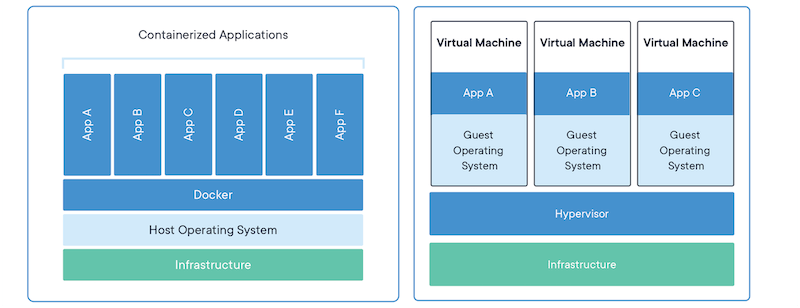
Image source: docker.com
Kubernetes
A single application could have hundreds of containers, and it would not be an easy task to manage such a large number of IT resources. Kubernetes or K8s helps here. It is a platform that helps orchestrate Linux containers, determining how and where the containers will run.
Terraform
Terraform is Infrastructure as a code software tool. DevOps team uses the tool to define resources as code and implement version control while allowing users to see when and where resources were altered.
GitLab CI/CD
Cloud ensures continuous delivery because it facilitates continuous integration/continuous development (CI/CD). GitLab software is used that enables CI/CD and lets users automate software testing and deployment while also providing security analysis, static analysis and unit tests.
Istio
It is an open-source service mesh helping organizations run distributed, microservices-based apps anywhere. Istio enables organizations to secure, connect, and monitor microservices, so they can modernize their enterprise apps more swiftly and securely.
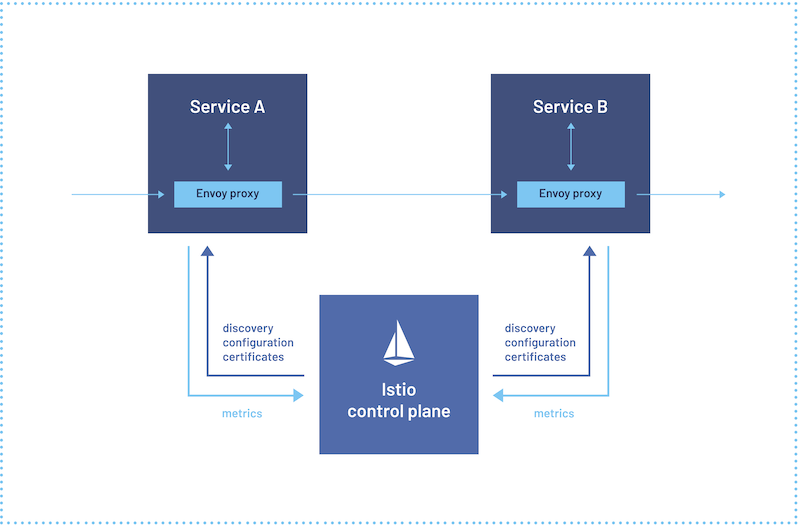
Image source: Istio
Prometheus
This open-source tool helps perform observability and enables you with basic capabilities for querying, visualizing, storing, alerting, integrating, and modeling big data sets.
Final Words
There’s never been a better time to explore the assortment of opportunities that comes with implementing application modernization services on cloud platforms. You can start your journey to the native cloud with an application modernization assessment program with a partner. Get a detailed cloud-native computing report, realize the true potential of cloud and become familiar with this approach before growing your cloud adoption.
Next time when you hear people talk the ‘cloud’ word, you know better – it’s ‘cloud-native.’
